A Wining Cost Estimate
That Helps You To Win More Roofing Construction Projects
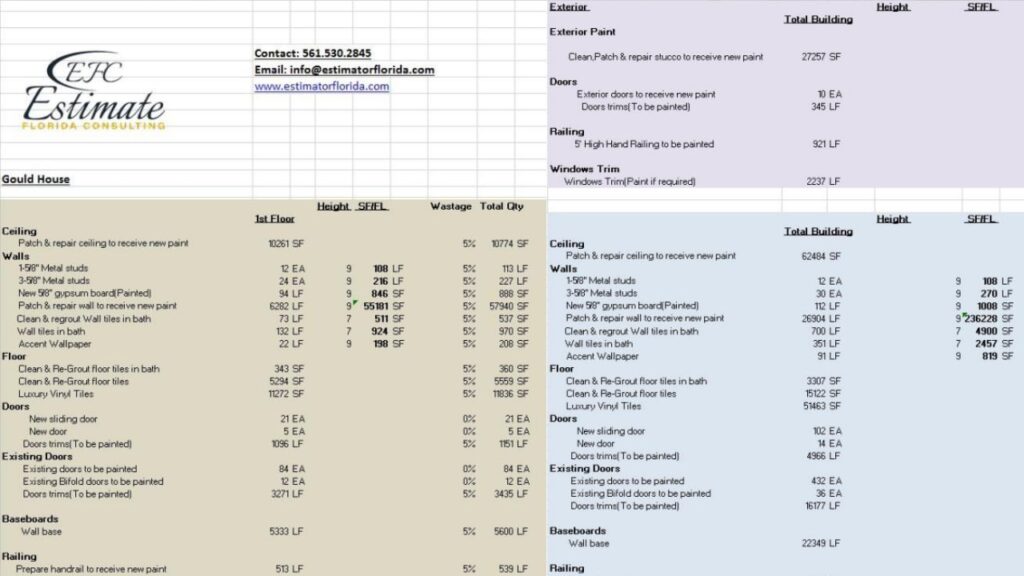
To get started with clay tile roofing installation, you’ll need to gather the necessary materials. In order to properly prepare yourself with the right tools and equipment, you should understand the different types of clay tiles that can be used for roofing. Additionally, you’ll need to procure the appropriate underlayment materials and adhesive and mortar materials required for clay tile roofing.
Clay tile roofing installation offers homeowners a diverse range of tiles to customize their home’s look. It’s important to understand the variations in types of clay tiles available. Barrel tile, Roman tile and Pantile are the three main types.
Barrel tile is an extruded half-cylinder shape, usually large in size. Roman tile has a pressed S-shaped curve, medium in size. Pantile is handmade and curved at the bottom, small in size.
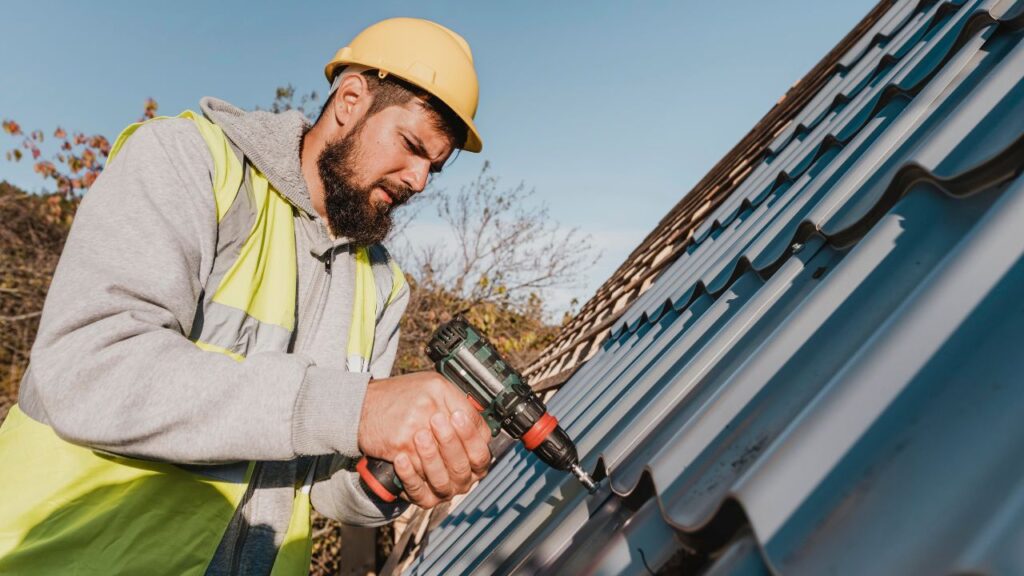
Pantiles were popular among Ancient Romans. Barrel tile was widely used in Mediterranean-style homes during the early 20th century. Selecting the right tile for your roof’s style and shape is crucial.
Make sure you’ve got the right underlayment before laying those clay tiles. Otherwise, your roof will be as useless as a waterproof teabag!
Underlayment for clay tile roofing is essential. Consider these key elements:
Underlayment ensures durability and longevity. It protects your home from potential leaks and reduces energy costs. Hire an experienced technician for proper installation.
Get ready for a sticky situation! Our list of adhesive and mortar materials will come in handy.

Gearing up for clay tile roof installation? You’ll need the right materials to properly secure the tiles. Adhesives and mortars are essential. Here are some materials you’ll need:
Choose carefully based on the specific use or application. Get enough from trusted sources. An improper choice could lead to danger or costly repairs. Follow safety recommendations and instructions for a successful project. Let’s get started!
To prepare for clay tile roofing installation with proper materials and techniques, you need to inspect the roof and prepare the layout. Additionally, ensure appropriate safety measures are taken beforehand and know how to store the clay tiles before installation. These are the three key sub-sections you need to know before moving forward with installation.
Inspect your roof thoroughly and professionally before beginning your clay tile installation! Make sure there are no damaged or missing shingles or tiles that need repair or replacement. Measure the size, identify the shape, determine the starting point for laying out, and mark lines with chalk. Calculate the number of tiles needed and check for any ventilation requirements. Factor in external conditions like strong winds too.
In California, summer’s mild weather is perfect for clay tile installations. However, one homeowner forgot an important step and ended up with water damage. So, first and foremost: safety first, haters second!
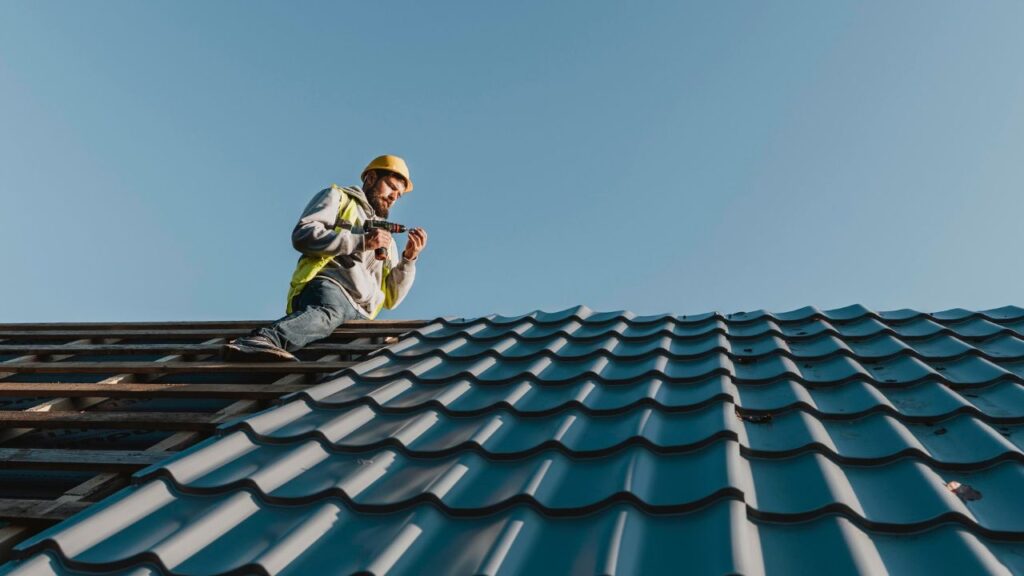
For a safe clay tile roofing installation, there are key safety steps to take:
Act now and stay safe!
It’s key to store clay tiles carefully before installation to prevent damage or breakage. Place them on a dry, flat surface away from moisture and direct sunlight. Put wood or plastic battens between each layer of tiles to keep them apart and avoid scratches. This ensures maximum durability and stability during transportation and installation.
Cover the stacked tiles with a water-resistant material to protect them from rain and other external elements. Too much moisture can lead to warping, discoloration, or hairline cracks in the tile surface.
If storing clay tiles for a while before installation, use a breathable roofing underlay for air circulation.
Pro Tip: Take safety measures when handling clay tiles such as wearing gloves, protective eyewear, and respirators. Clay tiles can produce dust that can be hazardous if inhaled. Now, it’s time to craft your roof with the art of clay tile installation!

To master the art of clay tile roofing, you want to learn about the best installation techniques. In order to get your clay tile roofing installed perfectly, you need to know the right way of installing underlayment, clay tiles on the roof, flashing, sealing, and ventilation. These are the sub-sections that we’re going to discuss in detail so you can confidently tackle your clay tile roofing installation project.
Installing clay tile roofing requires proper underlayment techniques. It serves as a barrier between tiles and the roof deck to stop water getting in and stop moisture issues.
Different types of underlay materials can be used depending on climate, steepness and insulation. Check building codes have the right permits. One contractor installed underlayment in monsoon season and rain caused some disruption. But they finished on time and under budget, without jeopardising quality.
Prepare your muscles and get ready to appreciate gravity as you install the clay tiles.
Maximize your roofing construction business’s potential with our competitive financing options

Installing clay roofing tiles needs a professional approach. Here’s a 5-step guide:
Step 1: Check the roof’s structure & underlayment.
Step 2: Arrange the tiles on the ground to match the design.
Step 3: Secure the underlayment before laying the tiles.
Step 4: Use tile fasteners or nails to fasten tiles.
Step 5: Rake out debris or unneeded cement between joints & flashings.
Each step is important for an error-free process.
Hire professionals for the job. Or else, look up tutorials or ask experienced friends.
Clay tiles provide durability & character. Plus, they’ll boost your home’s appeal.
Jeremy Harward Jr. restored his Victorian house with materials from 1901. He used Ludowici Roof Tile Company in Ohio for the clay roofing tiles. His home looks like one of Utah’s most beautiful vintage homes due to its unique clay roofing.
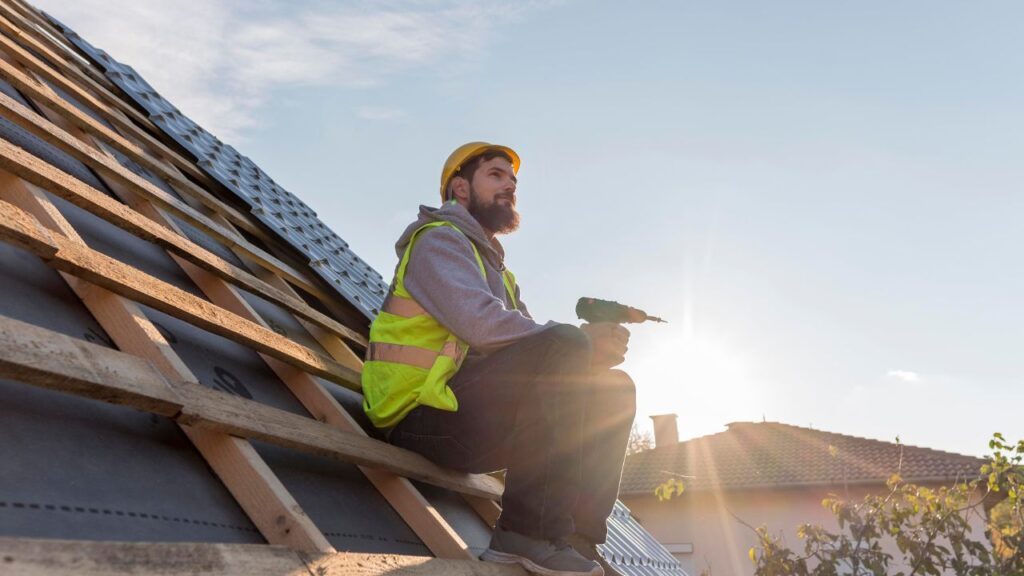
The key to flashing installation & sealing for clay tile roofing? Keep the elements out & the humor in!
Installing and sealing flashings for clay tile roofs is essential. It stops water from seeping in and causing costly harm. Here’s how to do it:
Note: Different flashings may be needed depending on local building codes. Also, check your roof periodically for any damage or wear.
Clay tile roofs have been around for centuries. They’re durable and guard against fire and bad weather – great for homeowners who want long-lasting protection. To finish off, ventilation must be installed in an attic – not a DIY job!
To make sure your clay tile roofing has good ventilation, install a mix of ridge and soffit vents. These allow air to circulate, preventing moisture buildup and damage to the roof. Using breathable underlayment can also help with ventilation by letting air in beneath the tiles. Plus, seal any openings in the roof, like chimneys or exhaust pipes, to stop air from getting out.
For the best results, the total area of the attic vents should be 1/150th of the attic’s floor area. In places with high humidity or lots of snow, additional ventilation could be needed to avoid mold or ice dams.
Pro Tip: Keep an eye on your attic vents, and clean them regularly so nothing blocks the airflow. Taking care of your clay tile roofing is worth the effort!

To properly maintain and repair your clay tile roofing, regular cleaning and inspection are essential to ensure its longevity. In order to assist you with this, this section of the article will guide you through the necessary steps you need to take for maintenance and repair of clay tile roofing. We’ll briefly discuss the sub-sections: repairing and replacing damaged or broken clay tiles, preventive maintenance measures, and regular cleaning and inspection of clay tile roofing.
Regular maintenance and inspection of clay tile roofing is essential to maintain its longevity and durability. Timely repairs can prevent costly damages, like leaks or cave-ins.
To clean and inspect your clay tile roofing:
Professional repair is still needed, even with regular upkeep. Check for unique details like improper tile installation or fading color. Immediate attention to such issues helps against elements like heat damage.
Don’t risk expensive damages; stay proactive in cleaning and inspecting your clay tile roofing. Expert repair is the best way to fix it.
To keep a clay tile roof in great condition, fixing and replacing damaged or broken tiles quickly is essential. This will stop further damage and save money on long-term repairs. Here’s a 5-step guide:
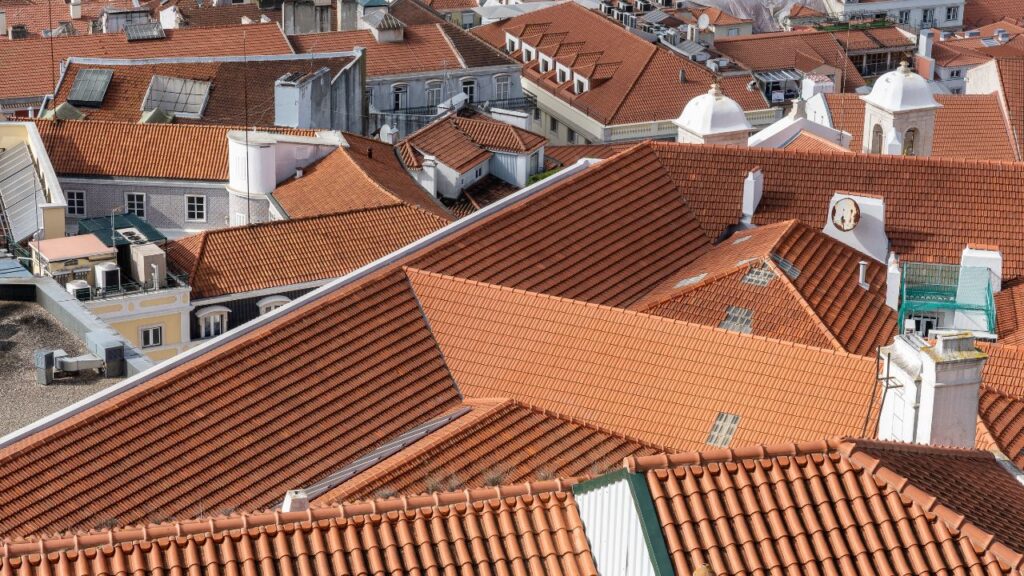
When replacing tiles, consider doing a few on either side for symmetry. Plus, experts can help with larger projects and guarantee safety. Do a bit of maintenance now to save grief later.
It is key to take preventive measures for clay tile roofing, for long-term maintenance and durability. Regular maintenance means minor damages are fixed quickly, and avoids major problems in the future. To do so:
It saves time, money, and energy in the long run. Not doing routine upkeep may lead to huge damage that needs more repairs or a full replacement. To ensure quality workmanship and reduce the risk of problems, professional contractors should handle any repair work.
Recently, a client had severe leakages from neglecting their clay tile roofing system. Our team was called to repair their roof, including replacing some tiles and fixing deteriorated flashings. We also suggested preventive measures for their roof’s upkeep. This gave them peace of mind, knowing they took proactive steps to protect their property. Clay tile roofing is beautiful but requires care – like a high-maintenance relationship.

To understand the upsides and downsides of clay tile roofing, with a comparison to other roofing materials, we’ve compiled a section within the article ‘A Comprehensive Guide to Installing Clay Tile Roofing: Materials and Techniques’. In this section, we highlight the advantages and disadvantages of clay tile roofing. We’ll begin by outlining the benefits of clay tile roofing, followed by its drawbacks, and conclude by comparing clay tile roofing to other common roofing materials.
Clay tiles offer many benefits to homeowners.
Installation is cost-effective and fast. It requires only a single or double lap, depending on the roof structure.
Surprisingly, this traditional architectural style dates back to ancient Rome and Greece! Research by Johns Hopkins University Architecture Department shows that it’s still popular today.
Clay tile roofing has some drawbacks. Here are some:
But, clay tile roofing offers many advantages. It is durable, energy efficient, and increases home value with its classic look.
Repairs may be hard in the future due to variations in color and texture. NRCA found that clay tile roofs can last up to 100 years with proper maintenance. Other roofing materials fade quickly, unlike clay tile.
Comparing Clay Tile Roofing with Other Roofing Materials:
Roofing materials come in various forms. So, what makes clay tile roofing unique? Let’s break down the details of this material versus the others.

It’s worth noting that clay tile roofing may be more costly than asphalt shingles, but it lasts longer. Metal roofing is the most expensive initially, but it can save you money on energy bills in the future. Clay tiles also have the added benefit of thermal mass property, which helps maintain an optimum temperature indoors.
Ultimately, each roofing material has its pros and cons. Weigh the pros and cons to see what works best for you. Get the benefits of a durable and energy-efficient roof; upgrade your home with clay tile roofing today! Just be prepared to see red if you’re going for a budget-friendly option.
To understand the cost of installing clay tile roofing with the factors affecting it and the estimated cost, read on. The cost of a roofing project can be influenced by several factors, including the size of the roof, the complexity of the installation process, and the materials used. In this section, you will find information on the two sub-sections – factors affecting the cost of clay tile roofing installation and the estimated cost of a clay tile roofing installation.

Important Factors That Affect the Cost of Clay Tile Roofing Installation.
Clay tiles make for an amazing roofing option, but the installation cost can vary. To get a good idea of expenses, take note of these key factors:
Factors | Cost Range |
|---|---|
Tile quality | $5-$10/sq ft |
Roof pitch | $2-$3/sq ft |
Underlayment type | $0.6-$1/sq ft |
Labor charges | $5-$7/sq ft |
Roof size, accessibility, and location must also be considered. However, cheaper options may result in a substandard job.
For accurate quotes, contact trustworthy contractors who have experience installing premium clay tile roofs.
Don’t skimp on the quality of your clay tile roof! Get in touch with the best professionals now to make sure your property has a stunning, durable addition.
Clay tile roofing is pricey, but worth it! Factors like roof area size, angle of slope, complexity of installation, and location can all affect the cost. Get an accurate estimate before starting the project.
Material Cost per Square: $700-$1,000.
Labor Cost per Square: $350-$500.
Removal of Old Roofing Cost: $100-$150 per square.
Dumpster Rental Cost: $300-$400.
Underlayment Installation Cost: $100-$200 per square.
High quality, thicker tiles cost more than standard asphalt shingles. If you live in a metropolitan area or high-end neighbourhood, labor rates will be higher.
Clay tiles provide great protection against extreme weather conditions, and last up to 100 years with proper maintenance. Plus, they add curb appeal and value to your home.
After reading this guide, you should know materials and techniques for installing clay tile roofing. Choose the right type of tile for your climate and location. Underlayment installation is essential for preventing leaks. Hiring a professional can save time and money.
Maintain the roof with regular inspections after extreme weather. Clean it at least once a year. Repair any damage or wear on tiles or underlayment quickly.
Installing clay tile roofing requires planning and the right techniques. Research and prepare before starting for years of benefits.
A homeowner in Southern California learned the hard way about selecting experts for clay tile roofing projects. He didn’t do research and had to redo the job. This reminds us to research installers before starting a project.
The materials needed for installing clay tile roofing include clay tiles, underlayment, roofing nails, flashings, ridge caps, and mortar.
Yes, experience in roofing is highly recommended when installing clay tile roofing. It requires knowledge and skill in handling the materials and performing the necessary techniques to ensure a successful installation.
Clay tile roofing can be installed in most climates, but extreme weather conditions such as heavy snow or hail may damage the tiles. It is important to consult with a professional roofer to determine if clay tile roofing is suitable for your specific climate.
Clay tile roofing can last up to 100 years or more if properly maintained. However, the lifespan can vary depending on the quality of the materials, installation techniques, and weather conditions.
It is not recommended to install clay tile roofing over an existing roof. The old roof should be removed to ensure a proper installation and to prevent any potential issues with weight and wear and tear on the structure.
The cost of installing clay tile roofing can vary depending on several factors such as the size and complexity of the roof, quality of the materials, and the location. It is recommended to obtain quotes from multiple roofing contractors to compare prices and find the best value.
Here I am going to share some steps to get your roofing construction cost estimate report.
You can send us your plan on info@estimatorflorida.com
Before starting your project, we send you a quote for your service. That quote will have detailed information about your project. Here you will get information about the size, difficulty, complexity and bid date when determining pricing.
We do roofing construction cost estimating and prepare a detailed report for your project. At last, you finalize the report and finish the project.
561-530-2845
info@estimatorflorida.com
Address
5245 Wiles Rd Apt 3-102 St. Pete Beach, FL 33073 United States
561-530-2845
info@estimatorflorida.com
Address
5245 Wiles Rd Apt 3-102 St. Pete Beach, FL 33073 United States
All copyright © Reserved | Designed By V Marketing Media | Disclaimer
IMPORTANT: Make sure the email and cell phone number you enter are correct. We will email and text you a link to get started.
By clicking “I Agree” above you give Estimate Florida Consultin express written consent to deliver or cause to be delivered calls and messages to you by email, telephone, pre-recorded message, autodialer, and text. Message and data rates may apply. You are able to opt-out at any time. You can text STOP to cancel future text messages.